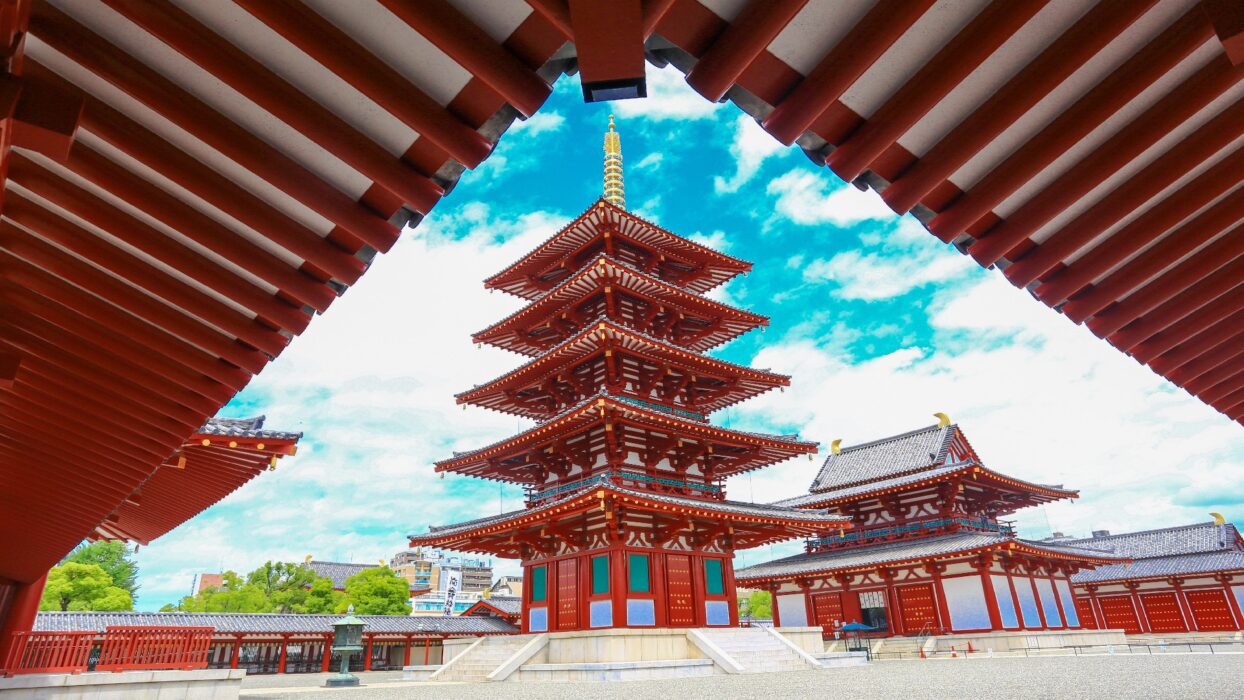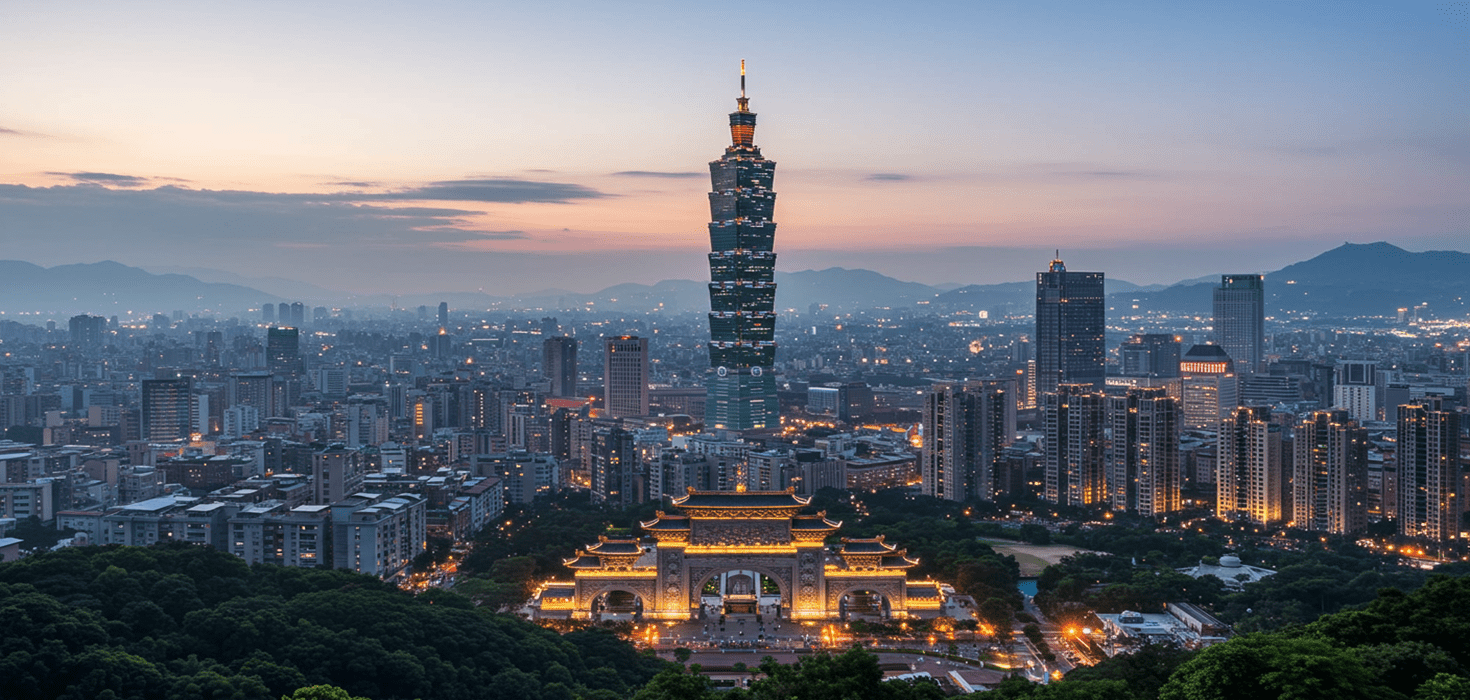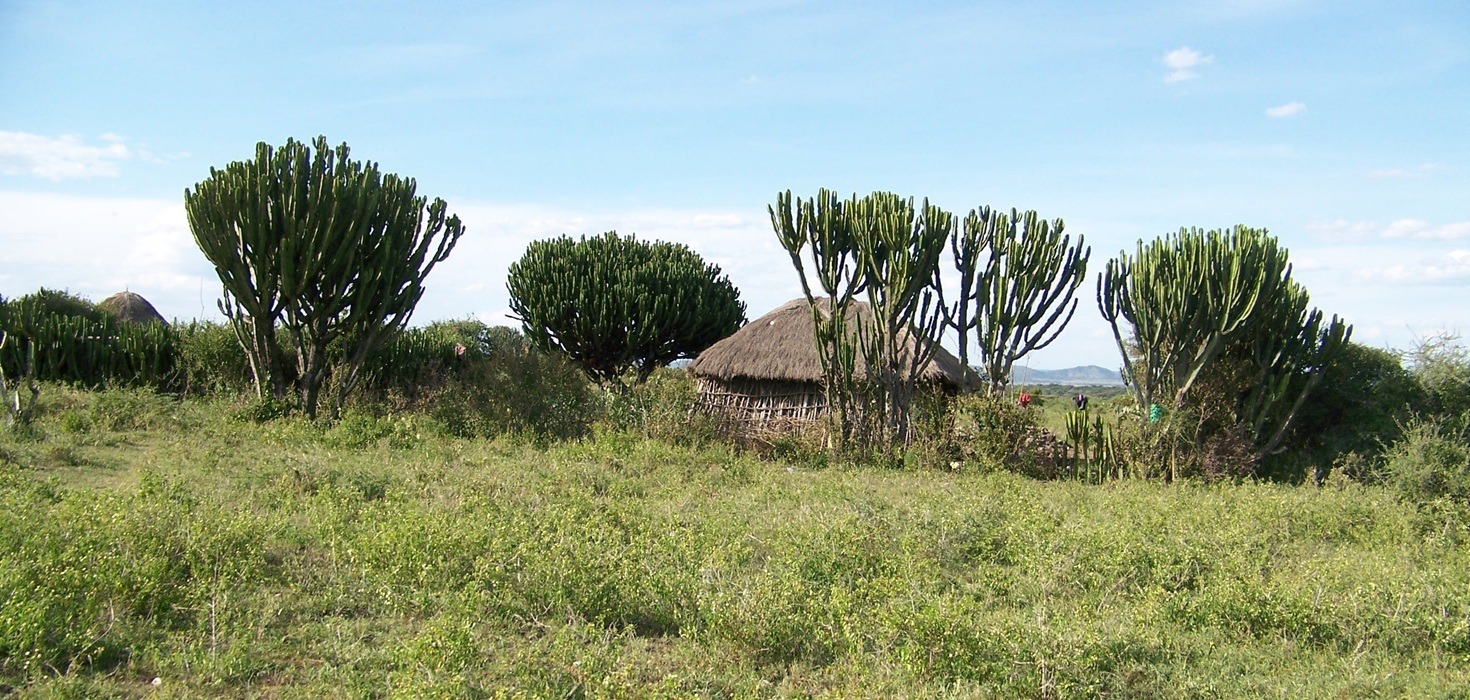Fushimi Inari Shrine: A Shinto Treasure in Kyoto
Welcome to Fushimi Inari Shrine, one of Kyoto’s most enchanting and significant Shinto shrines! Nestled at the base of Mount Inari, this sacred site is dedicated to Inari, the god of rice, and is renowned for its stunning torii gates. These vibrant red gates create a mesmerizing pathway that winds through the lush forested trails, drawing visitors from all over the globe. The allure of Fushimi Inari Shrine lies not just in its breathtaking beauty, but also in its rich cultural significance, making it a must-visit destination for anyone exploring Kyoto cultural experiences.
As you approach the shrine, you’ll be greeted by the sight of thousands of torii gates, each inscribed with the names of the individuals and businesses who have donated them. This unique architectural feature not only serves as a symbol of prosperity and good fortune but also provides a stunning backdrop for photography enthusiasts. The vibrant orange color of the gates, contrasted against the green of the surrounding forest, creates a picture-perfect scene that changes with the light of day, making every visit a new experience.
The Enchanting Torii Gates: A Photographic Wonderland
The moment you step into the world of Fushimi Inari, you’ll find yourself surrounded by a seemingly endless array of torii gates. Stretching over 10,000 gates, the trails lead you through the sacred mountain, creating one of the most iconic landscapes in Japan. Each gate represents a donation, and as you walk through them, you can’t help but feel a sense of connection to the countless souls who have walked this path before you.
For those looking to capture the perfect shot, timing is everything! Early morning or late afternoon provides the best lighting conditions, casting a warm glow that accentuates the vibrant colors of the gates. In spring, the cherry blossoms add a delicate touch, while autumn brings a riot of reds and oranges, creating a stunning contrast against the torii gates. Don’t forget to explore different angles—try shooting through the gates for a unique perspective or capturing the gates’ reflection in nearby puddles after a rain!
If you’re keen on photography, consider visiting during the quieter hours to avoid the crowds. This way, you can truly immerse yourself in the serene atmosphere and snap those Instagram-worthy shots without interruption. Whether you’re a seasoned photographer or just want to capture memories, Fushimi Inari Shrine offers endless opportunities to create stunning images that will last a lifetime.
The Fushimi Inari Hike: Trails of Color and Spirit
Ready to lace up your hiking boots? The trails of Fushimi Inari Shrine offer a fantastic outdoor adventure that combines physical activity with spiritual exploration. The main trail stretches about 2.5 kilometers to the summit of Mount Inari, where you’ll be rewarded with breathtaking views of the city below. The hike takes roughly 2 hours to complete, depending on your pace and how often you stop to take in the views or snap photos of the stunning gates.
If you’re looking for something a bit more challenging, consider venturing off the beaten path to explore some of the lesser-known trails. These routes are less crowded, allowing you to soak in the tranquility of nature while discovering hidden shrines and beautiful landscapes. Keep an eye out for the fox statues that dot the landscape; they are said to be the messengers of Inari and add to the mystical ambiance of the area.
Whether you’re seeking a leisurely stroll or a more vigorous hike, Fushimi Inari Shrine caters to all fitness levels. The trails are well-maintained, but be sure to wear comfortable shoes and bring water to stay hydrated. As you hike, take a moment to appreciate the spiritual significance of the site and the history that surrounds you. Each step through the torii gates is a step deeper into Japan’s rich cultural heritage.
Cultural Significance of Fushimi Inari Shrine
Fushimi Inari Shrine is steeped in tradition and cultural significance. The shrine is dedicated to Inari, the deity associated with rice, agriculture, and prosperity. As you wander through the torii gates, you’ll encounter numerous fox statues, which are considered the messengers of Inari. These playful and mystical creatures are often depicted holding a key in their mouths, symbolizing the opening of the rice granaries.
Visitors often participate in rituals at the shrine, such as offering prayers or purchasing amulets for good fortune. The shrine hosts several festivals throughout the year, including the famous Inari Matsuri, which celebrates the deity with vibrant processions and traditional performances. Engaging in these local customs not only deepens your connection to the shrine but also enriches your understanding of Japanese culture.
As you explore, take a moment to reflect on the stories and legends associated with Fushimi Inari Shrine. Each corner of the shrine whispers tales of devotion, prosperity, and the enduring connection between the people and their gods. This is not just a place to visit; it’s a sacred space that invites you to pause, reflect, and appreciate the beauty of Japan’s spiritual heritage.
Practical Information for Your Visit
Planning your trip to Fushimi Inari Shrine? Here’s everything you need to know to make your visit smooth and enjoyable! The shrine is open 24 hours a day, allowing you to explore at your own pace and even catch the breathtaking sunrise or sunset. However, the best time to visit is during the early morning or late afternoon when the light enhances the beauty of the torii gates.
Getting to Fushimi Inari Shrine is a breeze! It’s conveniently located just a short train ride from Kyoto Station. Hop on the JR Nara Line and disembark at Inari Station, which is only a few minutes away from the shrine entrance. For those who prefer a more scenic route, consider taking a leisurely stroll from the nearby Fushimi area, where you can soak in the local atmosphere.
Accessibility is also a priority at Fushimi Inari Shrine. While the trails can be steep and uneven in parts, there are pathways suitable for wheelchairs and strollers. If you have mobility challenges, it’s best to stick to the lower trails where the terrain is more forgiving. Don’t hesitate to ask staff for assistance if needed; they’re always ready to help!
Culinary Delights Near Fushimi Inari Shrine
After a day of exploring the magical torii gates, you’ll want to refuel! The area surrounding Fushimi Inari Shrine is packed with delightful eateries and food stalls that serve up delicious traditional Japanese cuisine. One must-try dish is Inari-zushi, a sweet sushi wrapped in a thin layer of fried tofu, which is said to be a favorite of Inari, the deity to whom the shrine is dedicated.
If you’re in the mood for something warm and comforting, grab a bowl of ramen or udon at one of the cozy local restaurants. For a quick snack, don’t miss the street vendors selling yakitori (grilled chicken skewers) and takoyaki (octopus balls). Pair your meal with a refreshing cup of matcha or a traditional Japanese tea for the full experience!
For dessert lovers, the area boasts a variety of sweet shops offering mochi and taiyaki (fish-shaped cakes filled with sweet red bean paste). Treat yourself to something special as you unwind after your adventures at the shrine!
Festivals and Events at Fushimi Inari Shrine
Fushimi Inari Shrine is not just a place for quiet reflection; it’s also a hub of vibrant celebrations! Throughout the year, the shrine hosts several festivals that showcase traditional Japanese culture. One of the most popular is the Inari Matsuri, held in early February, where visitors can witness colorful parades, traditional music, and dance performances that fill the air with joy and excitement.
Another highlight is the rice planting ceremony in June, where locals participate in rituals to ensure a good harvest. If you happen to visit during this time, you’ll get a unique glimpse into the agricultural traditions that are deeply rooted in Japanese culture.
Mark your calendars for the Fushimi Inari Shrine Grand Festival in late September, which features spectacular processions and ceremonies that draw crowds from all over Japan. Participating in these events will give you an authentic experience of Japanese culture and a deeper connection to the shrine.
Seasonal Travel Insights for Fushimi Inari
Every season brings a new charm to Fushimi Inari Shrine. Spring is particularly magical, as cherry blossoms bloom, creating a stunning backdrop against the vibrant red torii gates. The sight of pink petals fluttering in the breeze is nothing short of breathtaking! If you’re a photographer, this is the perfect time to capture the beauty of the shrine.
As summer rolls in, the lush greenery surrounding the shrine becomes a vibrant oasis. The trails are alive with the sounds of nature, making it a wonderful time for hiking and exploring. Just remember to stay hydrated and wear sunscreen, as the sun can be quite strong!
Autumn transforms Fushimi Inari into a canvas of fiery reds and oranges, as the leaves change color. This season is perfect for leisurely strolls through the torii gates, with every step offering a new perspective on the stunning landscape. Winter, on the other hand, offers a serene experience as the shrine is often dusted with snow, creating a peaceful and ethereal atmosphere.
Safety and Health Guidelines for Visitors
Your safety and well-being are paramount during your visit to Fushimi Inari Shrine. While the trails are generally safe, it’s wise to wear sturdy shoes to navigate the uneven paths comfortably. If you plan to hike to the summit, be sure to take breaks and hydrate regularly to avoid exhaustion.
As with any outdoor activity, it’s essential to be mindful of your surroundings. Watch your step, especially on steeper sections, and be cautious of slippery areas after rain. If you’re hiking with children, keep a close eye on them, as some trails can be steep.
Lastly, respect the local customs and traditions while visiting the shrine. Maintain a respectful demeanor, especially in sacred areas, and be mindful of noise levels to preserve the serene atmosphere that makes Fushimi Inari so special.
Fun Facts About Fushimi Inari Shrine
Did you know that Fushimi Inari Shrine is one of the oldest shrines in Kyoto, dating back to 711 AD? It’s true! This iconic site has a rich history that adds to its allure. The shrine is also famous for its fox statues, which are believed to be the messengers of Inari. You’ll find them scattered throughout the grounds, each with its own unique expression.
Another fun fact: the torii gates are not just beautiful; they are a symbol of prosperity and good fortune. The gates are donated by individuals and businesses, and each one is inscribed with the donor’s name, making every gate a part of a larger story. The largest gate, called the Otorii, is a whopping 33 feet tall and stands proudly at the entrance, welcoming visitors with open arms.
Lastly, Fushimi Inari Shrine has made appearances in various films and media, including the acclaimed movie “Lost in Translation.” This has contributed to its status as a must-visit destination for travelers from around the world!
Commonly Asked Questions (FAQs)
Got questions? We’ve got answers! Here are some of the most frequently asked questions about visiting Fushimi Inari Shrine:
- What is the best time to visit Fushimi Inari Shrine? Early mornings or late afternoons are ideal for avoiding crowds and enjoying the serene atmosphere.
- Are there any entrance fees? No, Fushimi Inari Shrine is free to enter, making it a budget-friendly destination!
- How long does it take to hike to the top? The hike to the summit takes about 2 hours, but feel free to take your time and enjoy the views.
- Can I take photos? Absolutely! Photography is encouraged, especially among the stunning torii gates.
- Is it accessible for people with disabilities? While some trails can be challenging, there are accessible paths around the shrine for visitors with mobility needs.
Detailed Day-by-Day Itinerary for Fushimi Inari
Ready to make the most of your time at Fushimi Inari Shrine? Here’s a suggested itinerary to help you explore this enchanting site:
Day 1: Discovering the Shrine
- Morning: Arrive early to beat the crowds and enjoy the tranquility of the shrine.
- Late Morning: Hike to the summit, taking breaks to snap photos and appreciate the views.
- Lunch: Enjoy Inari-zushi at a nearby eatery.
- Afternoon: Explore the lower trails and visit the smaller shrines along the way.
- Evening: Return to the main entrance for sunset photography.
Day 2: Cultural Immersion
- Morning: Participate in a local ritual or purchase an amulet for good fortune.
- Late Morning: Visit the food stalls and try some local delicacies.
- Afternoon: Attend a festival if your visit coincides with one, or explore the surrounding area.
- Evening: Enjoy dinner at a local restaurant, sampling Kyoto’s culinary delights.
This itinerary allows you to experience the beauty, culture, and spirituality of Fushimi Inari Shrine while leaving room for spontaneity and exploration!
Transportation Details: Getting to Fushimi Inari
Getting to Fushimi Inari Shrine is a breeze! As mentioned earlier, the shrine is easily accessible via public transportation. The JR Nara Line from Kyoto Station is your best bet, with Inari Station just a quick hop away. If you’re feeling adventurous, consider renting a bike and cycling through the scenic streets of Kyoto to reach the shrine.
For those who prefer taxis, they are readily available throughout the city, and drivers are familiar with the shrine’s location. If you’re staying in the Fushimi area, it’s a lovely walk to the shrine, allowing you to soak in the local atmosphere along the way.
Sustainability and Conservation Focus
Fushimi Inari Shrine is a sacred site that deserves our respect and care. As visitors, we can contribute to its preservation by following a few simple guidelines: always stick to designated paths to protect the natural environment, avoid littering, and be mindful of noise levels to maintain the peaceful atmosphere.
Consider supporting local businesses and artisans when shopping for souvenirs. This not only enriches your experience but also helps sustain the local economy. By practicing responsible tourism, we can all play a part in preserving the beauty and sanctity of Fushimi Inari Shrine for future generations.
Shopping Guide: Souvenirs and Local Crafts
No visit to Fushimi Inari Shrine is complete without picking up a unique souvenir! The area is filled with shops selling traditional crafts, such as omamori (protective amulets) and ema (wooden plaques for writing wishes). These make for meaningful keepsakes to remember your visit.
For something truly special, look for handcrafted fox figurines, which symbolize Inari. Each one is unique and makes for a lovely memento of your trip. You’ll also find local snacks and sweets, perfect for sharing with friends and family back home!
Fushimi Inari Shrine is more than just a destination; it’s an experience that intertwines natural beauty, cultural richness, and spiritual significance. Whether you’re hiking through the iconic torii gates, participating in local traditions, or simply soaking in the ambiance, every moment spent here is a treasure. So pack your bags, grab your camera, and get ready for an unforgettable adventure in Kyoto!










